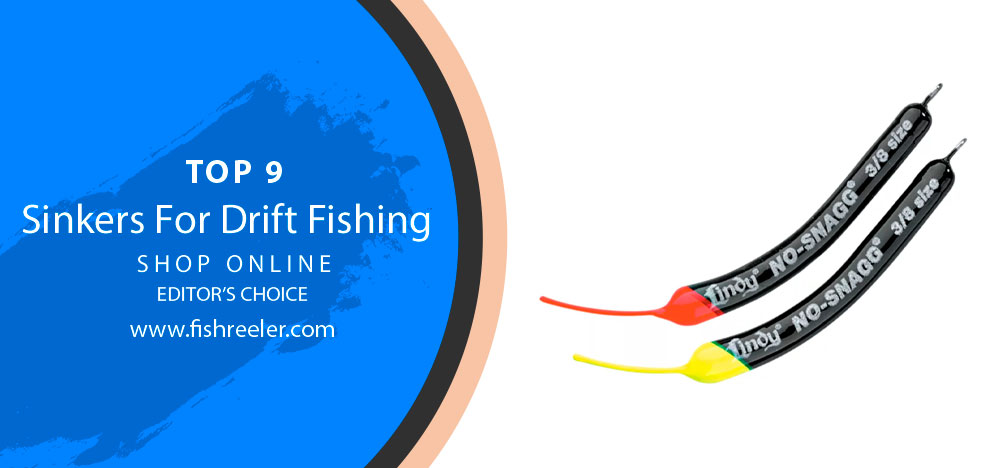
Cast Away: Unraveling the Secrets of Sinkers for Successful Drift Fishing
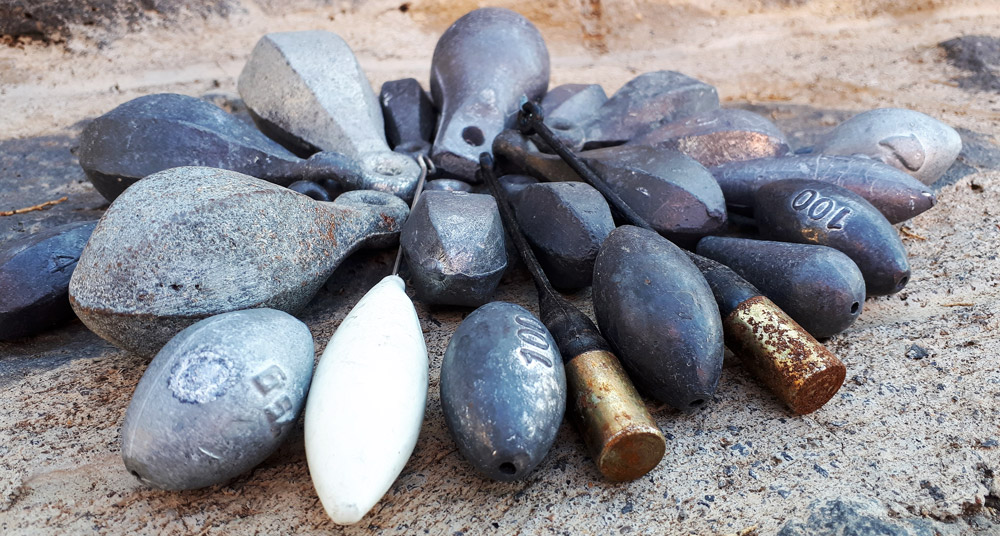
Welcome, fellow anglers and enthusiasts! Today, we delve into the captivating world of drift fishing. This beloved sport fishing technique involves allowing your bait to drift naturally with the current, whether in a river, lake, or ocean. Its allure lies in its simplicity and effectiveness, not to mention the thrill of pitting yourself against the strength of the water and the cunning of the fish.
Setting the Bait: The Art and Science of Drift Fishing
Drift fishing is an art as much as a science. It’s about understanding the rhythms of the water, the behavior of the fish, and how the two interact. And, like any art, it requires the right tools. That’s where sinkers come into play.
Weighting in the Water: The Pivotal Role of Sinkers in Drift Fishing
Sinkers, those often overlooked pieces of fishing gear, are critical to successful drift fishing. They serve as weights that ensure your bait reaches the right depth, maintaining a natural drift in the water column that is enticing to your target species. Without the correct sinker, your bait might just float unappealingly at the surface or sink too quickly, missing the fish altogether.
In this article, we’re going to cast a spotlight on these unsung heroes of drift fishing. We’ll explore why sinkers are so important, how to choose and use them effectively, and the environmental considerations surrounding their use. So, whether you’re a seasoned angler or a budding fisherman, join us as we dive deeper into understanding the pivotal role of sinkers in drift fishing.
Best Sinkers For Drift Fishing Review
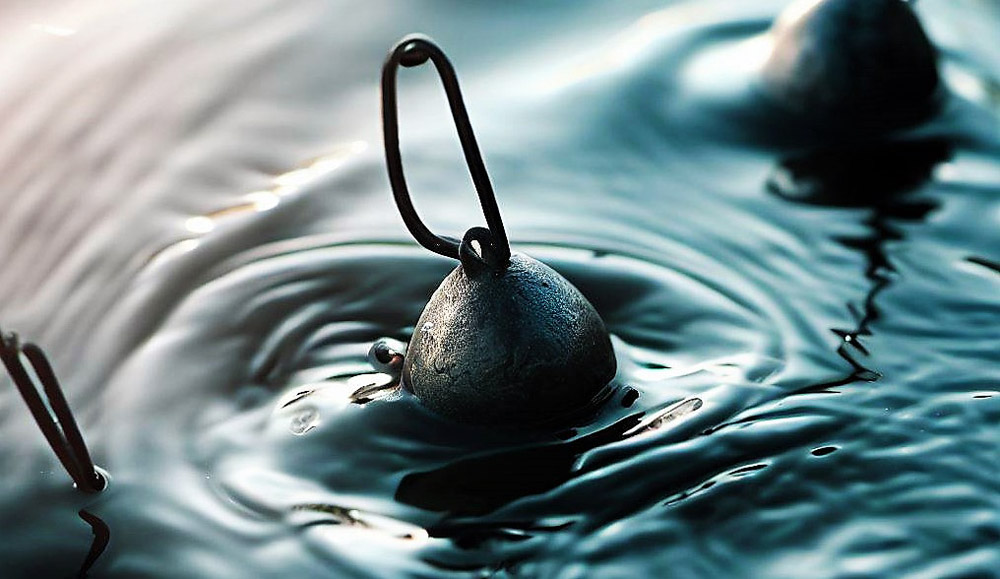
Drift fishing is one of the most popular ways to fish. When done correctly, it can be an extremely effective way to catch fish. In order to drift fish effectively, you need to use the right sinkers.
When it comes to drift fishing, using the right sinkers is essential for getting your bait where the fish are. In this post, we’ll take a look at some of the best sinkers for drift fishing and what makes them so popular with anglers. Whether you’re looking for weight to use with a jig or live bait, we’ve got you covered! So, without further ado, let’s get started!
1# Bass Pro Shops Pencil Sinker
The Bass Pro Shops Pencil Sinker is an essential weight style for free drifting or boondogging for steelhead. It is moulded of soft lead and designed to slice through current, to get your bait down to the bottom quickly and keep your line as short as possible. The Pencil Sinker provides an excellent feel when bouncing over rocks or gravel, sand, and soft bottom. It is equally effective whether fished from a boat or the bank.
2# Wing-It Quick Swap Slip Sinker
If you’re looking for a slip sinker that won’t require you to cut your line, the Wing-It Quick Swap Slip Sinker is a great option. This sinker slides right into its collar, allowing you to make depth changes or adjust for wind and current conditions in just seconds. Plus, it’s great for drop shot rigs and live-bait setups. And if you’re fishing in thick cover where big fish live, don’t worry about getting snagged – the weight will usually pull free, saving your rig. So try the Wing-It Quick Swap Slip Sinker and see how easy and convenient it is to use.
3# Lindy No-Snagg Slip Sinker
The Lindy No-Snagg Slip Sinker is a perfect choice. Designed by Ron Lindner, this sinker is made in the USA and offers a great alternative to traditional Carolina rigging or live bait presentations. The No-Snagg Slip Sinker glides over heavy cover without tumbling, twisting, or hanging up, and its innovative design means it won’t affect your bait’s presentation or action. So whether you’re fishing in rocks, brush, weed beds, stump fields, or other rig-eating places, the Lindy No-Snagg Slip Sinker is a great option.
4# Northland Fishing Tackle Roach Walker Sinker
Whether you’re targeting walleyes, trout, or panfish, Northland Fishing Tackle’s Roach Walker Sinkers are a great way to get your live-bait rigs down deep where the fish are biting. These sinkers feature a quick-change on/off design for easy rigging and come in bright fluorescent attractor colours that are sure to draw fish in from all around. Quantities vary by size, so be sure to pick up enough to keep your line properly weighted down. Made in the USA.
5# Water Gremlin Dipsey Swivel Sinker
These versatile Water Gremlin Dipsey Swivel Sinkers are perfect for trolling or bottom fishing with live bait. The sinkers feature a looped brass wire that allows them to swivel, minimizing line twists. Made of lead for durability, these Bass Casting Weights come in a variety of sizes to suit your fishing needs.
6# Lindy NO-SNAGG 1/8 Slip Sinker
Looking for a slip sinker that can stand up to tough fishing conditions? Look no further than the Lindy NO-SNAGG 1/8 oz. Slip Sinkers 2-Pack. These slip sinkers feature a banana-shaped design that glides over heavy cover, giving you a great feel on the bottom surface without tumbling, twisting or impeding bait action. 2 sinkers per pack.
7# H&H Lure Storm Sinker
The H&H Lure Storm Sinker is the perfect way to weigh down your line when you’re hunting trout or redfish. The sinker is made with durable lead and features a tapered design with deep ridges to keep your line steady. So you can focus on more important things than pulling your line back in – like landing that big fish!
8# Clarkspoon Ball Bearing Trolling Sinker
The Clarkspoon 3 oz. Ball Bearing Trolling Sinker virtually eliminates line twists and is made with nickel-black ball bearing snap swivels. The trolling sinker is made with lead and is a speciality weight. The package includes the trolling sinker.
9# H&H Lure Pearclaw Sinker
Looking to anchor your line and enjoy a successful fishing trip? The H&H Lure Pearclaw Sinker is just what you need. This lead sinker is durably constructed and features 4 bendable legs made of stainless steel. Whether you’re trout hunting or red fishing, the Pearclaw sinker is ideal. Plus, it comes in a handy box, so you can take it with you wherever you go. So don’t wait – make the H&H Lure Pearclaw Sinker part of your tackle box today!
The Importance of Sinkers in Drift Fishing

As we’ve already hinted at, sinkers play a critical role in drift fishing. But why exactly are they so important? The answer lies in the presentation and performance of your bait.
More Than Just Weight: The Unsung Hero of Drift Fishing
In the underwater world, presentation is everything. Fish are incredibly observant creatures, and if your bait doesn’t look right – if it’s not at the correct depth if it’s not moving naturally if it’s not in the right location – they’ll simply ignore it. Sinkers allow you to control your bait’s depth, ensuring it’s in the zone where fish are most likely to be feeding. They also allow your bait to move more naturally with the current, simulating the movements of the type of prey your target species would naturally be interested in.
Performance-wise, sinkers provide the necessary weight to cast your line to the appropriate distance and depth. Without a sinker, your bait would simply float on the surface, making it difficult to reach fish that feed at mid-water or near the bottom.
Making Waves: How Sinkers Shape Your Drift Fishing Success
The type and weight of the sinker you choose can be influenced by a variety of water conditions. For example, in deeper waters or stronger currents, you may need a heavier sinker to ensure your bait reaches the desired depth and stays there. Similarly, if you’re fishing over rocky or weedy bottom conditions, a sinker with a shape designed to prevent snagging (like a pencil or bullet sinker) might be the best choice to avoid losing your gear.
Conversely, in shallow or slow-moving waters, a lighter sinker might be all you need. The key is to use the lightest sinker possible that still allows you to maintain control over the positioning and movement of your bait. This helps to ensure a more natural presentation, which is likely to be more appealing to the fish.
In essence, sinkers are the silent workhorse of your fishing tackle, helping to present your bait in the most appealing manner to the fish, while adapting to the varying conditions presented by the aquatic environment. Understanding and appreciating their importance is the first step towards mastering the art of drift fishing.
Different Types of Sinkers: Shapes Under the Surface: A Tour of Sinker Varieties
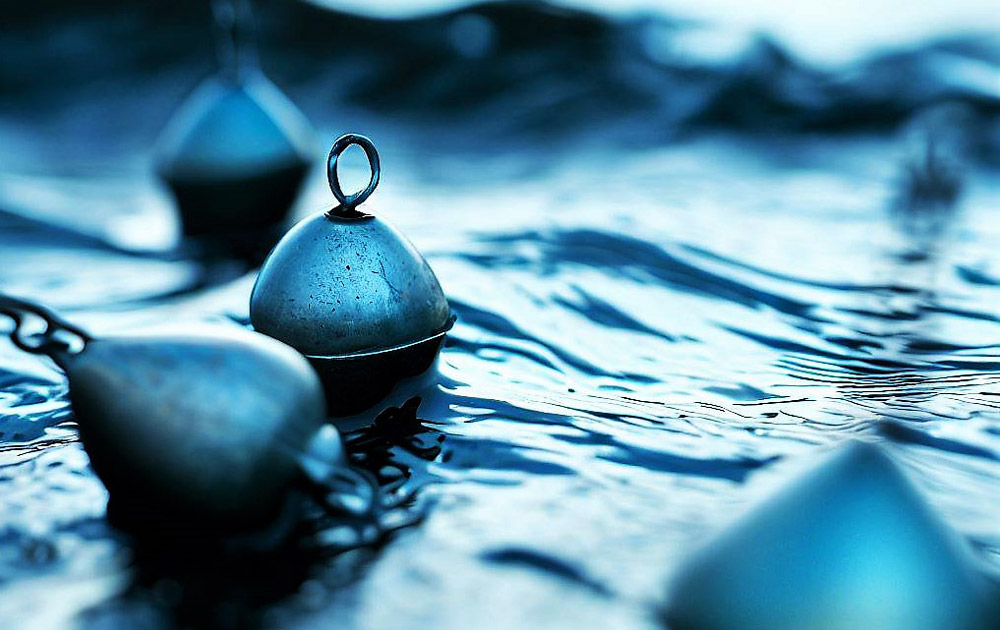
Shapes Under the Surface: A Tour of Sinker Varieties
When it comes to sinkers, one size certainly doesn’t fit all. They come in a variety of shapes, sizes, and materials, each with its own specific uses and advantages.
🔆Let’s take a tour of some of the most common types:
- Split Shot Sinkers: These are small, round sinkers that can be easily attached or removed from your line. They’re great for minor adjustments to your bait’s buoyancy or for fishing in shallow waters.
- Egg Sinkers: Named for their oval shape, these sinkers allow your line to slip through the hole in the middle, making them a great choice for drift fishing. They offer a smooth, snag-free drift and can be used in a variety of water conditions.
- Bank Sinkers: With their pear-like shape, these sinkers are designed to hold your bait steady in fast-moving currents. They’re a great choice for river fishing or when you need to reach deeper waters.
- Bullet Sinkers: Shaped like a bullet, these sinkers are ideal for fishing over heavy cover without getting snagged. They’re often used in weed-ridden lakes or rocky river bottoms.
- Pyramid Sinkers: These sinkers, shaped like a pyramid, are designed to dig into soft bottom surfaces, making them ideal for surf fishing or in strong currents.
- Pencil Sinkers: These long, thin sinkers are designed to reduce the risk of getting snagged on rocky or uneven bottoms.
Not All Sinkers are Created Equal: Understanding the Differences
When it comes to materials, most sinkers are made of lead due to its high density and low cost. However, in recent years, environmentally friendly alternatives like steel, tungsten, brass, and bismuth have become more popular due to concerns about lead poisoning in wildlife.
Each type of sinker has its own advantages and disadvantages, and the best one for you will depend on your specific situation. Factors to consider include the species you’re targeting, the depth and speed of the water, and the type of bottom you’re fishing over. By understanding the different types of sinkers and their uses, you can make an informed choice that will increase your chances of landing that big catch.
How to Choose the Right Sinker for Drift Fishing: Casting the Perfect Line: Choosing Your Sinker Wisely
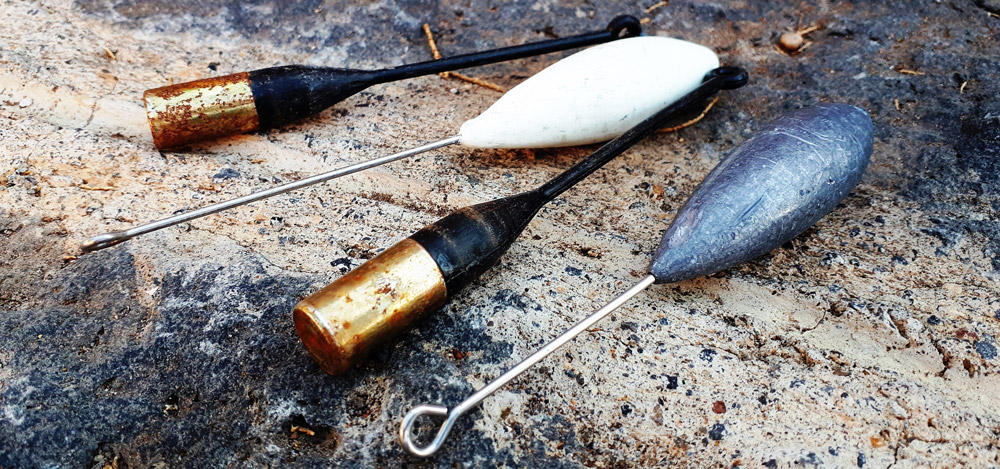
Casting the Perfect Line: Choosing Your Sinker Wisely
Choosing the right sinker for drift fishing can make a significant difference to your success rate.
✨Here are some key factors you should consider when making your choice:
- Target Species: Different species of fish inhabit different parts of the water column and have different feeding habits. Knowing your target species can guide you toward the right sinker. For instance, if you’re targeting bottom-dwelling species, you might need a heavier sinker like a bank or pyramid sinker to keep your bait at the correct depth.
- Fishing Location: The type of water body you’re fishing in – be it a calm lake, a fast-flowing river, or the open ocean – can greatly affect your choice of sinker. For instance, pyramid sinkers that dig into soft bottoms can be ideal for surf fishing, while pencil sinkers might be better suited to rocky river bottoms.
- Weather Conditions: Weather can influence water currents and wave action, which in turn can affect the movement of your bait. On windy days or in strong currents, a heavier sinker may be required to keep your bait in place.
- Type of Bait: The size and buoyancy of your bait can also influence the weight of the sinker you need. Larger or more buoyant baits may require heavier sinkers to get them down to the desired depth.
- Environmental Considerations: With increasing awareness about the environmental impact of lead sinkers, it might be worth considering alternatives made from steel, tungsten, or other materials.
The Right Weight: Factors to Consider in Sinker Selection
🌟To make this a bit more practical, let’s consider a few scenarios:
- If you’re drift fishing in a river with a strong current for species that dwell near the bottom, a heavy bank sinker might be your best bet.
- If you’re in a calm lake targeting species that feed in mid-water, a lighter split shot or egg sinker could do the trick.
- For surf fishing, where the waves can pull your bait around, a pyramid sinker that can dig into the sandy bottom might be the optimal choice.
- Remember, the goal is to use the lightest sinker that still allows you to control your bait effectively. This provides a more natural presentation, which is more likely to attract fish.
Tips and Techniques for Using Sinkers in Drift Fishing
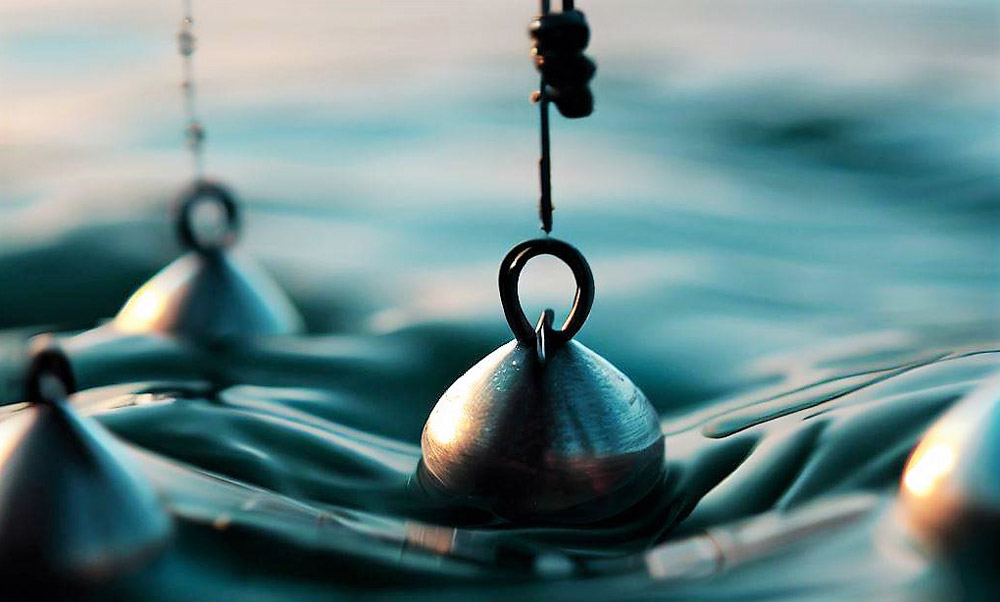
In-Depth Techniques: Mastering Sinker Use in Drift Fishing
Whether you’re a novice angler or a seasoned pro, honing your sinker use techniques can significantly enhance your drift fishing experience.
💢Here are some practical tips and common pitfalls to watch out for:
- Correct Attachment: Ensuring your sinker is attached correctly is vital. For egg sinkers, make sure the fishing line passes smoothly through the hole, allowing it to move freely. For split shot sinkers, ensure they are clamped securely onto the line but avoid damaging the line in the process.
- Adjusting Weight: As conditions change throughout the day, you may need to adjust the weight of your sinker. If your bait is moving too fast or not reaching the right depth, try using a heavier sinker. Conversely, if your bait is sinking too quickly or getting snagged, a lighter sinker may be in order.
- Testing Your Setup: Before casting your line, test your setup in the water near you. Check that your sinker is heavy enough to keep the bait at the right depth but light enough to drift naturally with the current.
- Regular Checking: Periodically check your line and sinker for any signs of damage. Sinkers can occasionally cause wear on your line, especially if they’re sliding types like egg sinkers.
Avoiding the Sinker Sinker: Common Mistakes and How to Dodge Them
🎇Now, let’s talk about some common mistakes to avoid:
- Overweighting: Using a sinker that’s too heavy can cause your bait to sink too rapidly or appear unnatural to fish. Remember, the goal is to mimic a natural drift as closely as possible.
- Underweighting: On the flip side, a sinker that’s too light may not get your bait deep enough, or it could allow too much drift, leading to a tangled line.
- Ignoring Conditions: Not adjusting your sinker weight according to changing water conditions or target species is another common pitfall. Always be prepared to adapt your setup as needed.
- Neglecting Environmental Impact: Using lead sinkers where they’re prohibited or in environmentally sensitive areas can harm wildlife and may carry legal consequences. Consider using alternatives like steel, tungsten, or bismuth sinkers.
By paying attention to these tips and avoiding common mistakes, you can enhance your drift fishing experience and increase your chances of reeling in a great catch.
The Impact of Sinkers on the Environment
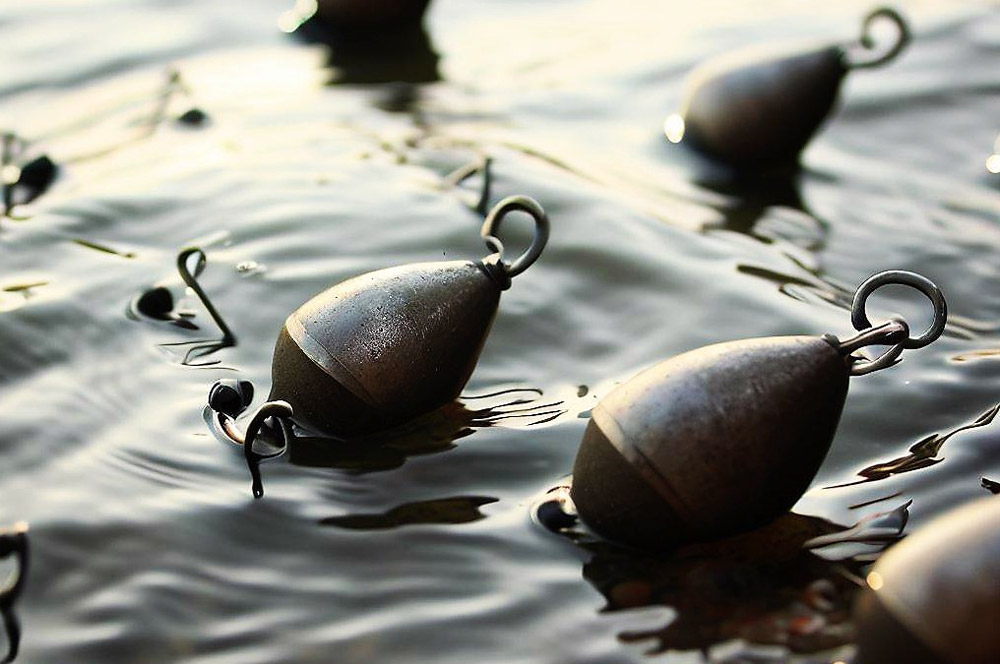
In the world of fishing, it’s easy to overlook the environmental impact of small items like sinkers. However, these tiny pieces of equipment can have a significant effect on our ecosystems, particularly when they’re made from lead.
Heavy Consequences: The Environmental Impact of Sinkers
Lead is a toxic metal that can harm wildlife if ingested. Waterfowl and other birds, for instance, can mistake small lead sinkers for the pebbles they normally ingest to aid digestion. Once in the bird’s gizzard, the lead sinker can slowly poison the animal, often leading to death. Aquatic life, too, can suffer from the effects of lead poisoning, leading to a decline in biodiversity and the overall health of aquatic ecosystems.
The use of lead sinkers is an issue of growing concern, and in response, many regions have implemented restrictions or bans on their use. As anglers, it’s essential that we do our part to protect the environment that provides us with so much enjoyment and sustenance.
Toward Greener Waters: Eco-Friendly Alternatives to Traditional Sinkers
⭐So, what can we do? Here are a few suggestions:
- Use Alternative Materials: Many companies now produce sinkers made from non-toxic materials such as steel, tungsten, brass, or bismuth. While these may cost a bit more than their lead counterparts, the investment is well worth it for the health of our environment.
- Retrieve Lost Sinkers: Whenever possible, retrieve and properly dispose of any sinkers you lose during your fishing trips. This can help reduce the amount of lead or other metals that end up in our waterways.
- Follow Local Regulations: Always follow local regulations regarding the use of lead sinkers. Not only will this keep you on the right side of the law, but it will also help protect local wildlife.
- Spread Awareness: Finally, spread awareness about the issue among fellow anglers. The more people are aware of the problem, the more likely they are to switch to environmentally friendly alternatives.
Remember, as anglers, we are stewards of the waters we fish in. Let’s do our part to keep them healthy for future generations of fish and fishermen alike.
Personal Experiences and Stories
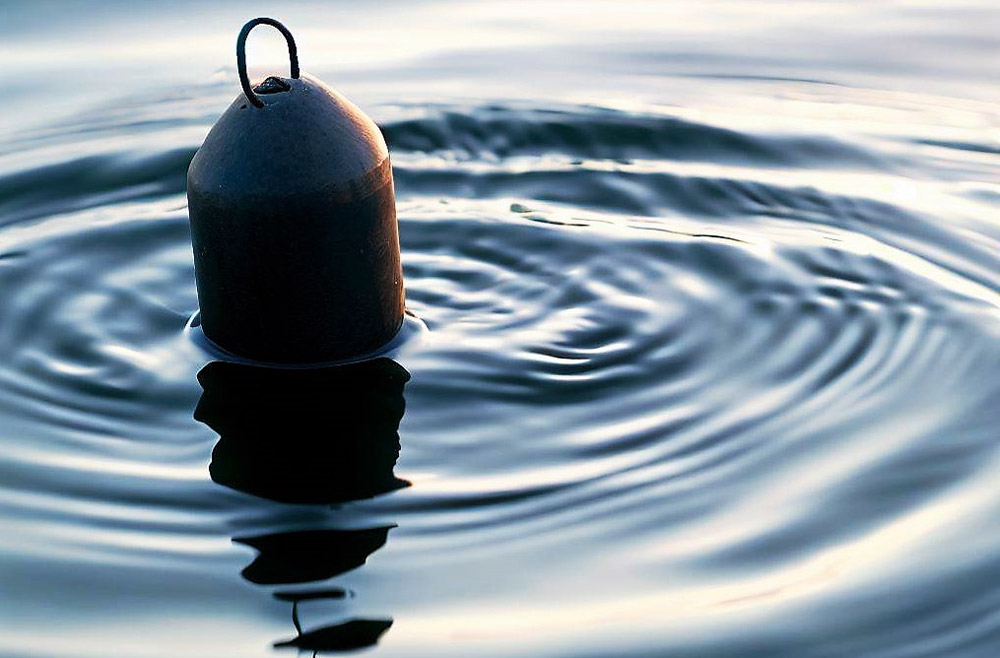
As a passionate angler, I’ve had countless experiences with sinkers that have shaped my approach to drift fishing. Let me share a couple of those stories to give you a practical context of what we’ve been discussing.
Reeling in the Big One: Personal Tales of Sinker Success
One memorable incident took place a few years back. I was fishing on a river known for its strong currents, targeting catfish that are notorious bottom dwellers. Despite knowing my target species and the water conditions, I made a novice mistake – I used a lightweight split shot sinker. My bait was simply skimming along the surface and didn’t reach the bottom-dwelling catfish. After several unfruitful hours, I switched to a heavier bank sinker. Almost immediately, I started getting bites and ended the day with a decent catch.
Another story that comes to mind happened during a family vacation by the lake. My daughter, a budding angler herself, was struggling to get her bait to stay put in the gentle lake currents. She was using a pyramid sinker, a choice influenced by our recent beach fishing trip. I explained how different sinkers are suited to different environments and swapped her pyramid sinker with a light egg sinker. Her face lighting up with her first catch of the day is a moment I’ll never forget!
Anecdotes from the Deep: Real-life Sinker Experiences in Drift Fishing
A more recent anecdote is related to my switch to non-lead sinkers. As I learned more about the environmental impact of lead sinkers, I decided to start using steel and tungsten alternatives. I must admit, I was initially skeptical about their performance, but I was pleasantly surprised! They worked just as well, if not better, and knowing I was reducing my environmental impact made my fishing trips even more satisfying.
These experiences serve as practical reminders that choosing the right sinker can be as critical as selecting the right bait or fishing spot. So take the time to learn, experiment, and don’t be afraid to switch things up – it’s all part of the fishing adventure!
Expert Opinions and Advice

Voices from the Vessel: Expert Advice on Sinker Use
In the realm of drift fishing, expert advice can provide invaluable insights, helping us refine our techniques and understanding.
⚓Let’s take a look at some words of wisdom from renowned figures in the fishing community:
- Understanding Your Environment – Dr. Mark Fisher, Marine Biologist. Dr. Fisher, a marine biologist known for his studies on fish behavior and habitats, once said, “Understanding your environment is key to successful fishing. The weight and style of your sinker should reflect the water conditions you’re fishing in. A fundamental grasp of the water depth, current, and bottom composition can drastically improve your catch rate.”
- Eco-friendly Fishing – Marcy Yarnell, Environmental Activist, and Angler. Marcy Yarnell, a well-known environmental activist, and avid angler, emphasized the importance of eco-friendly fishing. She stated, “Choosing non-toxic alternatives to lead sinkers is a small step with a big impact. As anglers, it’s our responsibility to protect the waters we love so much. Remember, fishing isn’t just about the catch; it’s about respecting and preserving nature too.”
- The Right Sinker for the Right Fish – Captain John Rivers, Charter Fishing Guide. Captain John Rivers, a renowned fishing guide with over 30 years of experience, shared his wisdom on choosing the right sinker: “Just as different lures attract different fish, different sinkers suit different conditions. A light egg sinker might be perfect for a calm lake, but take that to a turbulent ocean, and you’ll struggle. Always tailor your tackle to your target fish and fishing environment.”
- Learning from Experience – Ava Martinez, Professional Angler. Ava Martinez, a professional angler with numerous tournament wins under her belt, stressed the importance of experience: “Each fishing trip is a learning opportunity. Don’t get disheartened if your chosen sinker doesn’t work the first time. Experiment, observe, and adjust – that’s the true spirit of an angler.”
Wise Words on Weights: Tips from Seasoned Drift Fishers
These expert insights serve to reinforce the importance of understanding our environment, choosing the right sinker, considering the environmental impact of our choices, and learning from our experiences. Remember, even the most seasoned anglers are constantly learning and adapting.
FAQ: The Key Role of Sinkers
Remember, the ideal rod for drift fishing with sinkers can vary depending on many factors, including the species you’re targeting, local conditions, and personal preference. It’s always a good idea to ask for advice at a local tackle shop or from more experienced anglers.
Conclusion: Unleashing the Power of Sinkers for Efficient Drift Fishing
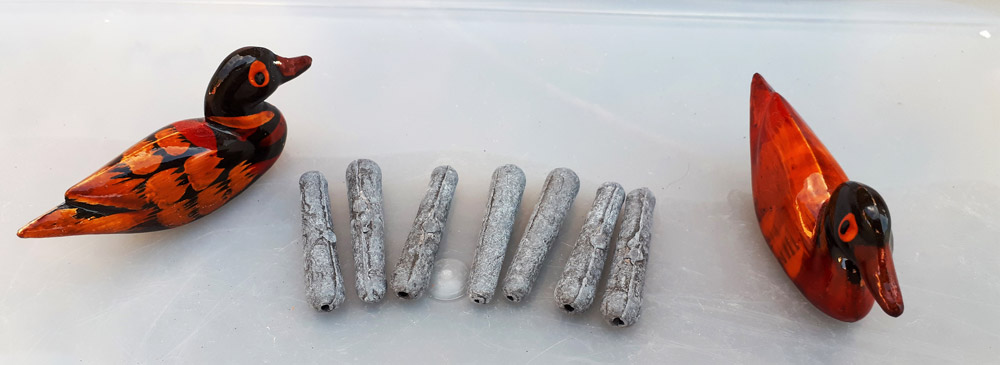
Tying It All Together: The Art and Science of Using Sinkers in Drift Fishing
As we bring our exploration of sinkers in drift fishing to a close, let’s recap the key points we’ve discussed:
We started by understanding the significance of sinkers in drift fishing – they’re not just weights but essential tools that influence the presentation and performance of your bait. The choice of sinker can be influenced by a variety of factors, including the target species, fishing location, weather conditions, and type of bait.
We then delved into the different types of sinkers available, highlighting the unique attributes and uses of each, from the versatile egg sinkers to the sturdy bank sinkers. Understanding these variations and their specific use cases can greatly enhance your fishing experience.
Reeling it Back: Reflecting on the Impact of Sinkers
Choosing the right sinker is a craft in itself, requiring keen observation and understanding of the fishing environment. We provided some guidance on making this selection and emphasized the importance of adapting to changing conditions.
We further shared practical tips and common mistakes to avoid when using sinkers in drift fishing. These tips serve as a guide to improve your fishing experience and increase your chances of a successful catch.
The Weight of the Matter: Summing Up Sinkers in Drift Fishing
Our discussion also shed light on the environmental impact of sinkers, particularly lead ones, and how we, as responsible anglers, can make a difference by choosing environmentally friendly alternatives and practices.
In essence, using the right sinker is not just about catching more fish, it’s about understanding and adapting to the environment, respecting the ecosystems we interact with, and continually learning and improving. It’s both an art and a science that can make your drift fishing experience more fruitful and enjoyable. So the next time you cast your line, remember, the humble sinker plays a crucial role in your drift fishing journey.

I live in Tenerife (Canary Islands) for the last 10+ years and share my daily fishing experiences on my website. Many years of personal experience as a fisherman and the vast experience of my friends allow me to write professionally on any fishing topics (from choosing a flashlight and equipment to deep-sea fishing).
All of my advice is based on practical real-world experience and will be useful to both novice anglers and professionals. Read more about the author.
Affiliate Disclosure: FishReeler.org sometimes gets paid for listings, through sponsors or affiliate programs like Amazon, Ebay, Cabelas, Bass Pro Shop, Shimano, Daiwa, Rapala, Renn, Okuma, KastKing, etс. Clicking a link helps keep FishReeler.org free, at no extra cost to you!
About the author: Each article is verified by the fishing expert Sergio Smirnoff. The articles are written by professional and amateur fishermen with 20+ years of fishing experience.
Note: The views and opinions expressed in this article are those of the authors and do not necessarily reflect the official policy or position of any agency. The articles are for informational purposes only, share your opinions in the comments and join the fishing discussions, let's share our fishing experiences together!

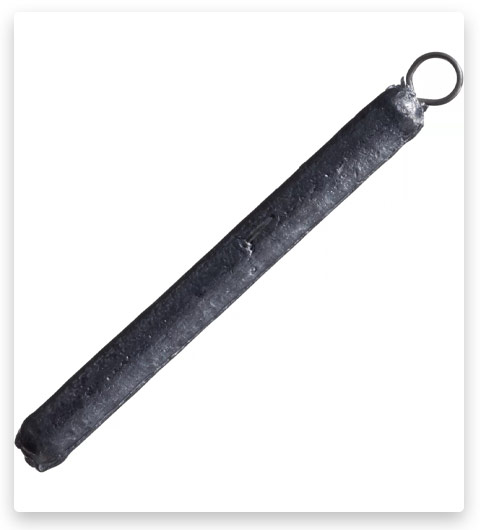
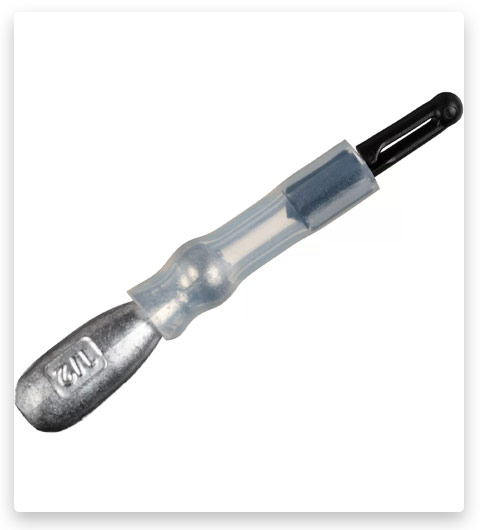
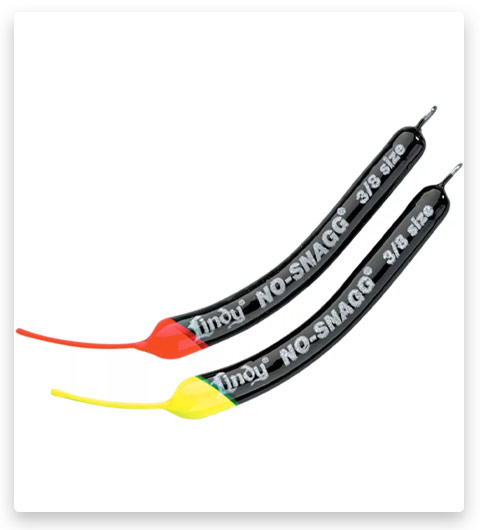
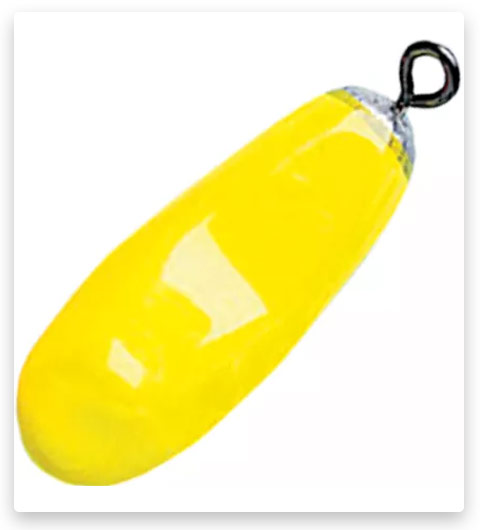
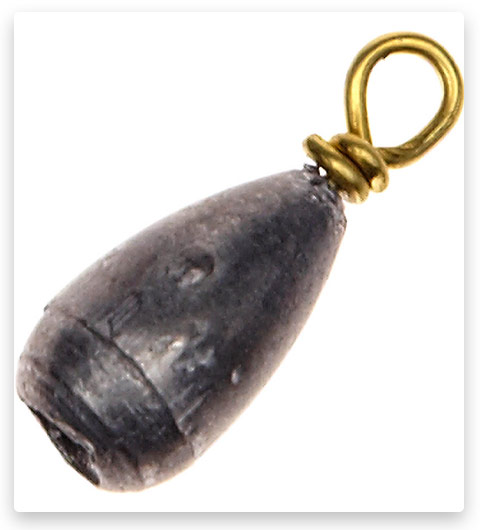

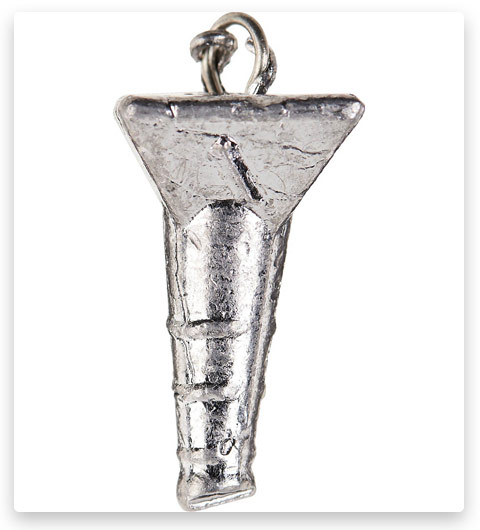
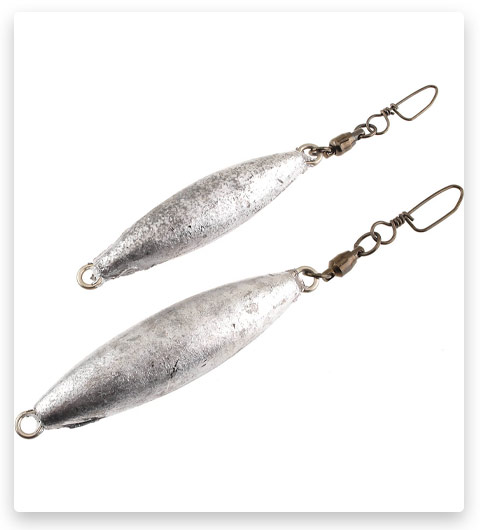

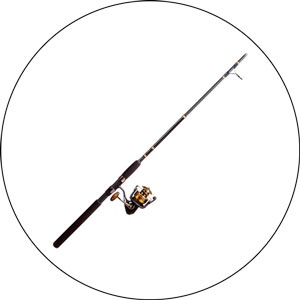

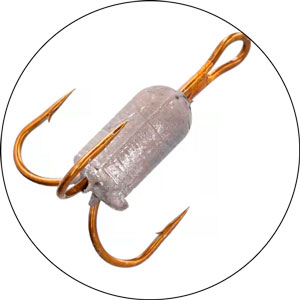
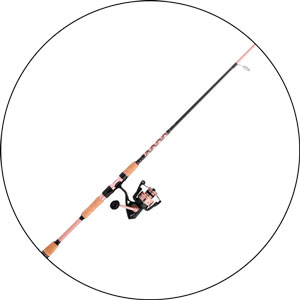
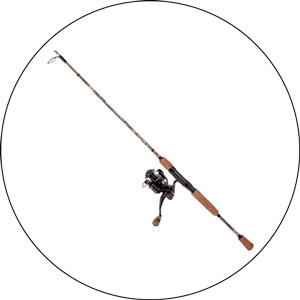
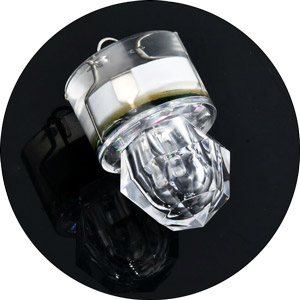
I found your article incredibly informative. I’ve used bank sinkers for a while now, but I’m intrigued by the bell sinkers you discussed. I’ll be trying those out on my next drift-fishing trip.
This is a great discussion on drift fishing. I’ve had my fair share of experiences, especially at Santee using the cork rig, and it’s worked wonders. Depending on the water depth, I adjust the weight of the sinker; 1oz for 0-20ft and 2oz for 20-40ft. For those fishing at Badin and Tillery, considering the water depths there, a 2oz sinker should suffice, but remember that your drift speed also plays a significant role. From my experience, the larger fish seem to prefer slower speeds.
Before using drift socks at Santee, I managed to catch plenty of fish, especially during the summer, but not many big ones, say over 30 lbs. It was only after I started using drift socks that I noticed a difference. Given that our area isn’t particularly windy, drift socks aren’t necessarily required.
However, I must admit, my attempts at drift fishing in Badin and Tillery haven’t been as successful. I have managed to catch some fish while drifting straight down around the thermocline line at Badin during the summer, but they were mostly small schooling blues, weighing in the range of 8-10 lbs.
If you’re planning on drifting straight down, pay attention to your leader quality. When a big fish strikes and pulls in the bait, the leader can easily get cut due to the angle. It’s a simple physics problem: the line goes straight down, a fish strikes, you set the hook, and the fish’s head movements could cut the line because of the 90-degree angle against its rough mouth.
Drift fishing is something I’m passionate about, but I haven’t been able to replicate the success I had at Santee in North Carolina. Maybe it has something to do with the muddy bottom. If anyone can figure out how to make it work, it would be a great help to all of us.
The detail you put into explaining each sinker and its optimal use scenarios is fantastic. I always just used the sinker that was available without giving it much thought. I think it’s time for me to invest in a variety of sinkers to improve my game.
In the comment section, I noticed some people talking about the weights they use. Personally, I use what’s commonly known as “worm weights” or “snake weights”. My method involves taking a shoelace and cutting a 3″-4″ section. I then burn one end shut, after which I add 1/0 or 2/0 buckshot.
Once the buckshot is in, I burn the other end shut, but not before leaving enough slack to either slip a line through or attach it to a snap swivel. It’s a handy little setup that has served me well in my fishing endeavors.
I’ve been drift fishing for a few years now, and I never realized how much the type of sinker could affect my success. This article opened my eyes to the various sinker options out there. I’m eager to try out the pyramid sinkers based on your recommendation.
I came across this post and felt the need to share my experience, albeit limited. I’m not an expert in catching these fish and have only been fortunate enough to snag a couple of smaller ones. However, from what I’ve understood, they do seem to favor river bottoms that are rich with stumps, rocks, and logs.
Given the rough terrain, it seems reasonable that extra abrasion protection for your line would be beneficial, especially when you’re trying to work one of those larger catches away from the bottom and out of some dense cover.
Just went out fishing last weekend with some egg sinkers and had a hard time. After reading your article, I see that I probably should have used a walking sinker for the conditions I was in. Next time I’ll be better prepared.
While going through this discussion, I noticed the topic of drift fishing. Although I don’t do much drifting myself, I have thought about crafting a few rigs for the times I do. Interestingly, I came across an easy method on Facebook that involves using a barrel swivel, mono line, 1/4 oz egg weights, beads, and heat shrink. It seems like a simple yet effective setup for occasional drift fishing.
I appreciate the depth of information on each sinker type. It would be even more helpful if you could provide more real-world examples of when to use each type. Thanks for the great content!
I was reading through the thread and wanted to share my personal experience. When it comes to flounder fishing, I’ve found cigar sinkers to be quite effective, using weights up to 8oz. I typically connect the rig to one eye and the sinker to the main line on the other eye.
This setup has proven to be successful for me, especially when drifting in water up to 100′ deep. It’s a great method for catching those flatties and I’ve noticed it results in fewer snags as well. For power trolling, I’d suspect they would perform just as well. Given a choice, I’d probably opt for the longer one.
Great post! I had no idea there were so many factors to consider when choosing a sinker for drift fishing. This will definitely improve my setup for my next fishing trip.
I felt compelled to share a rule I always stick by while reading through these comments: if someone hastily criticizes my gear or fishing technique without taking the time to understand my approach, I tend not to value their advice. It’s premature to make judgments without seeing how well my method works. Often, these individuals are stubbornly attached to their own preconceptions, even when they see me landing more fish. On the other hand, those who show curiosity about my gear and observe my technique before commenting are typically seasoned anglers, and I’m always willing to exchange ideas with them.
In the past, I did a significant amount of drift fishing for springers, often adopting a heavy-weight, tight-line approach. I found that the fish would typically hide under the base of chutes or obstructions in deep, fast-moving water. These were the fish that lighter-weight anglers usually missed, as their gear couldn’t reach the depths until the mid to lower parts of the hole. Despite successfully hooking and landing fish in these conditions, it was amusing how some of these fishermen would still insist that I was using too much lead, even after watching my success.
Drift fishing, in my experience, is always a process of trial and error. That’s why I prefer using pencil lead due to the ease of adjusting weights. I usually leave an extra-long tag on my swivel for crimping, making it just as easy to add lead as to remove it. I’d suggest breaking the hollow core by bending it back and forth rather than cutting it, as the latter often closes over the hole.
I particularly liked the pros and cons listed for each type of sinker. It made it easier for me to decide which one fits my needs best.
If you’re a regular drift fisher, it would be a wise investment to consider purchasing CMOR maps for your locale. These maps are a game-changer when it comes to finding underwater structures with ease. Plus, you’re not confined to heavily fished, public areas; you’ll be privy to less crowded spots.
What’s even better is that you can visualize the structure, allowing you to set up your drift to cover the entirety of the area, as opposed to just skimming over a small segment. Over time, these maps will pay for themselves by saving you the trouble and cost of aimlessly searching for suitable fishing structures.
I’ve been drift fishing for years and this article still taught me a few things about sinkers. Thanks for the valuable information.
You’ll find some excellent ledges in the 210-290′ range, depending on your location. In addition, there’s a plethora of wrecks situated between 200-100′. As for the reef system, I believe there are still 3 reefs in that area, although further north this drops to 2. Essentially, the strategy is to start deep and then drift shallow, although this is, of course, dependent on the wind. If you wish, you can fish the entire water column, or you could concentrate on flats or deep baits.
Starting with chicken rigs is a good idea. Use 2-4 3/0 hooks with squid or cut bait. If you’re after something a bit larger, then drifting a bigger bait on a long leader is a good approach. Use 15-25′ of 30-50lb fluorocarbon tied to your mainline, with either an egg sinker or bank sinker above the swivel.
Once you hit the bottom, reel up the slack then drop your line back to the bottom, leaving the spool open and paying out the line as you drift away from the bait. It’s crucial to let the bait sit! Anticipate the thud (indicating a grouper) or the runoff (signaling a mutton). Once you feel the tug, reel as fast as you can until you’re tight.